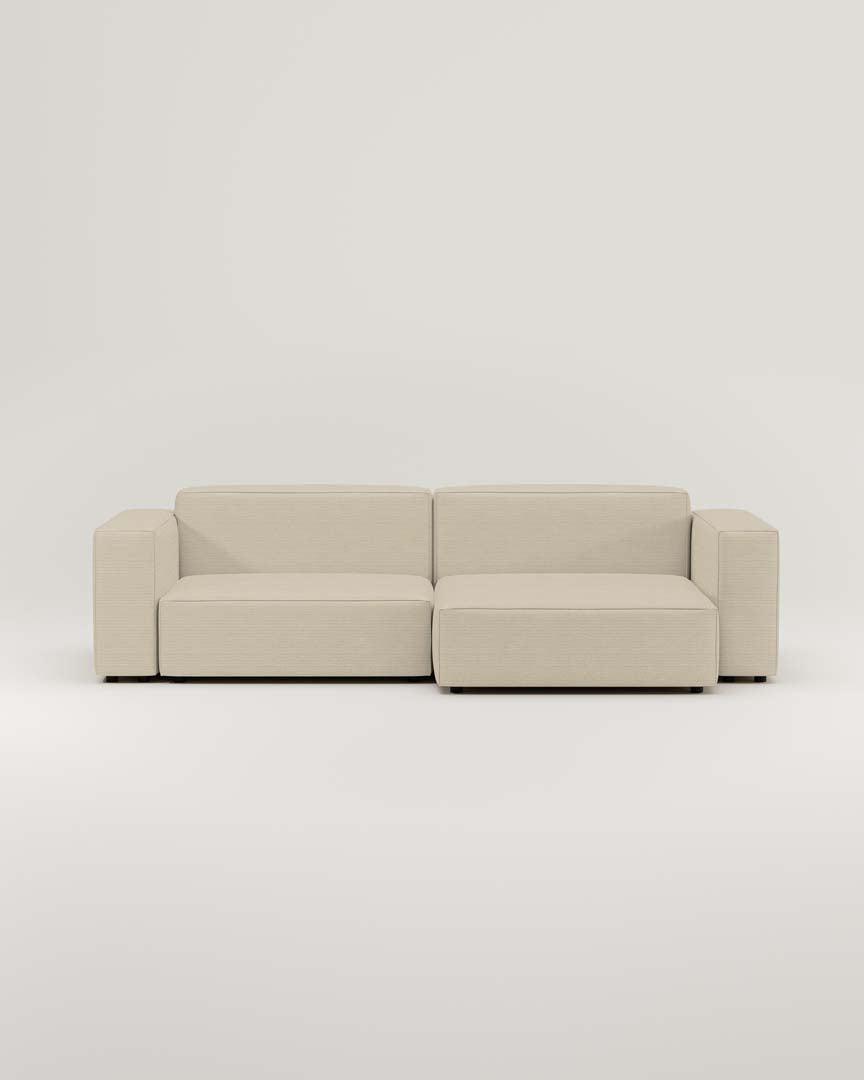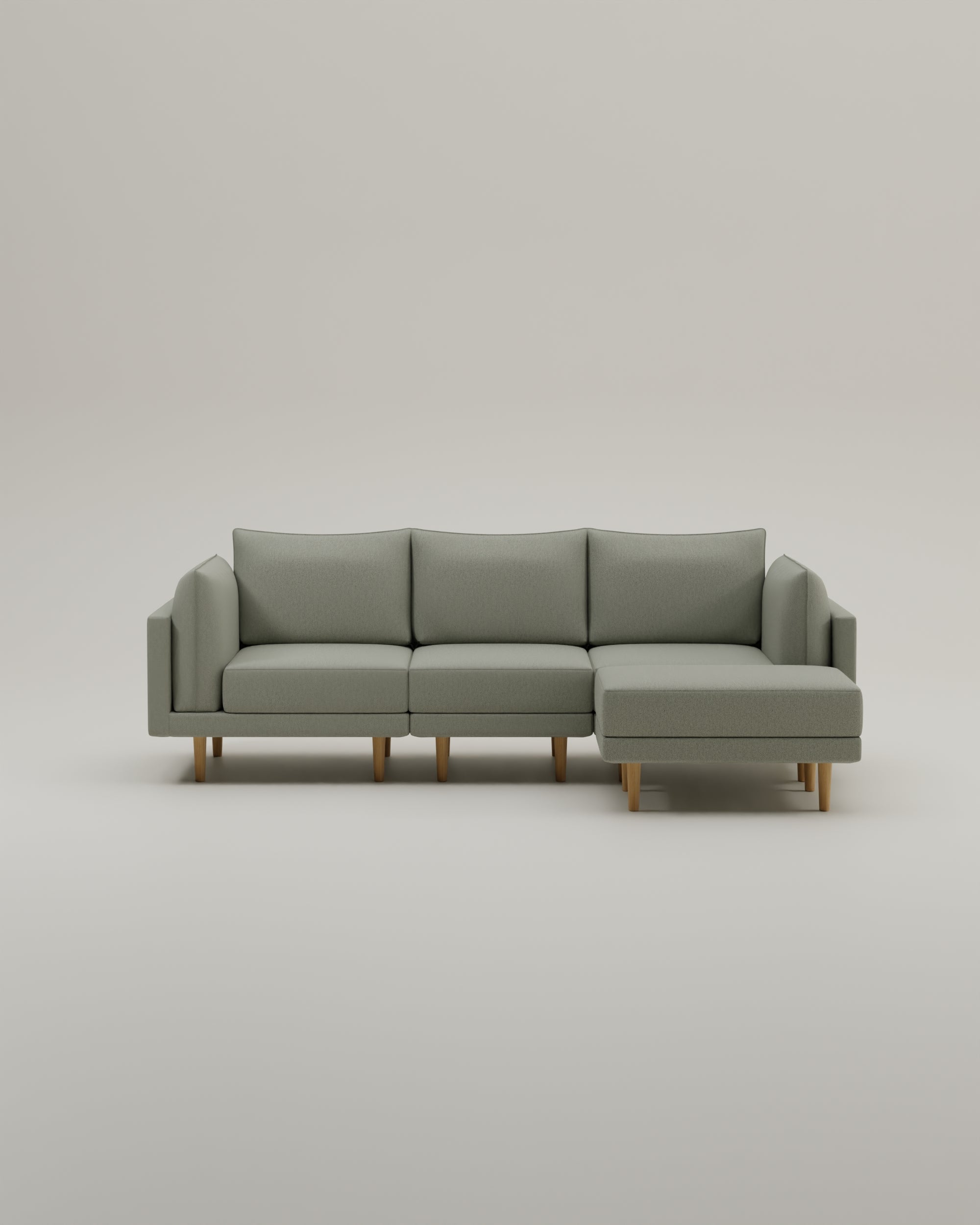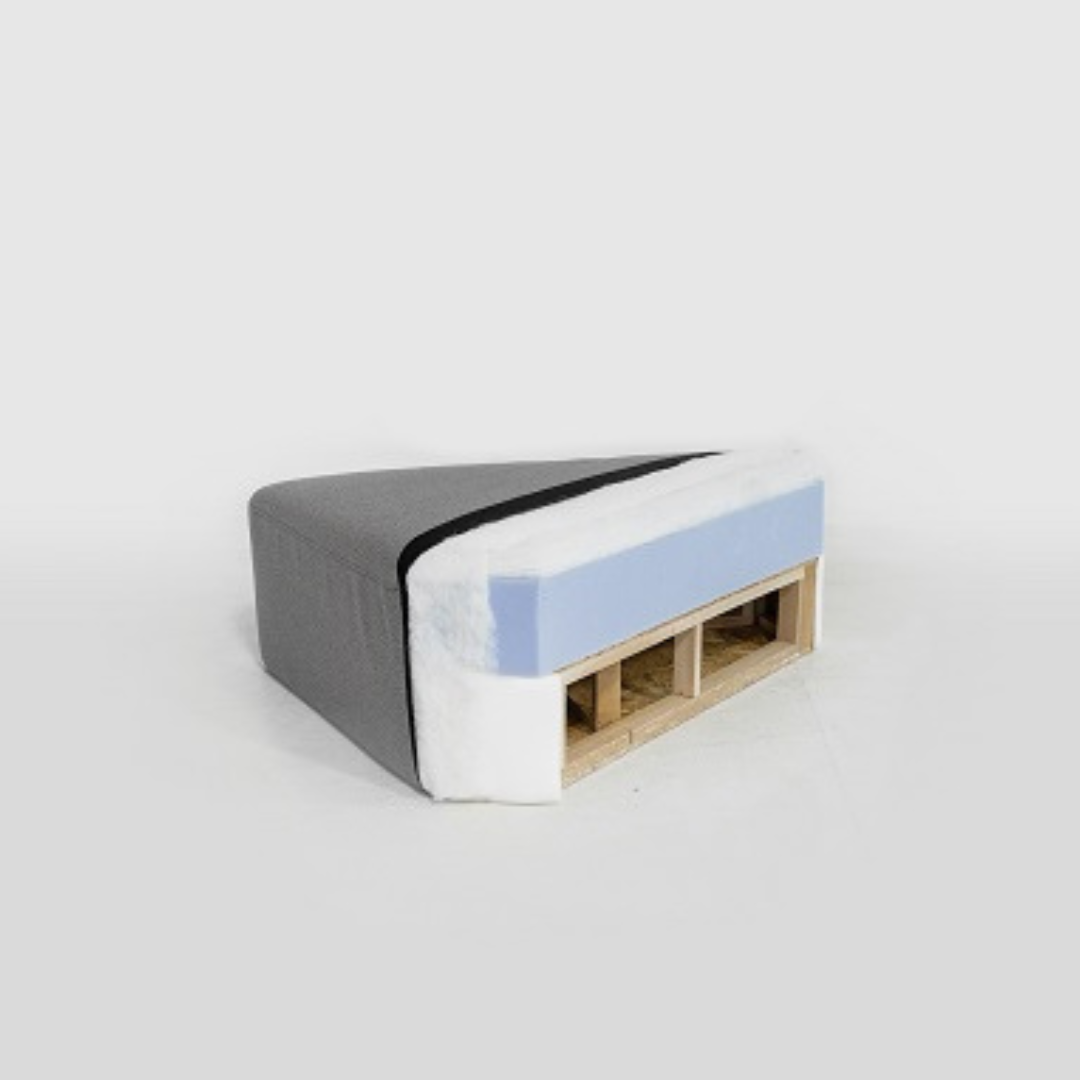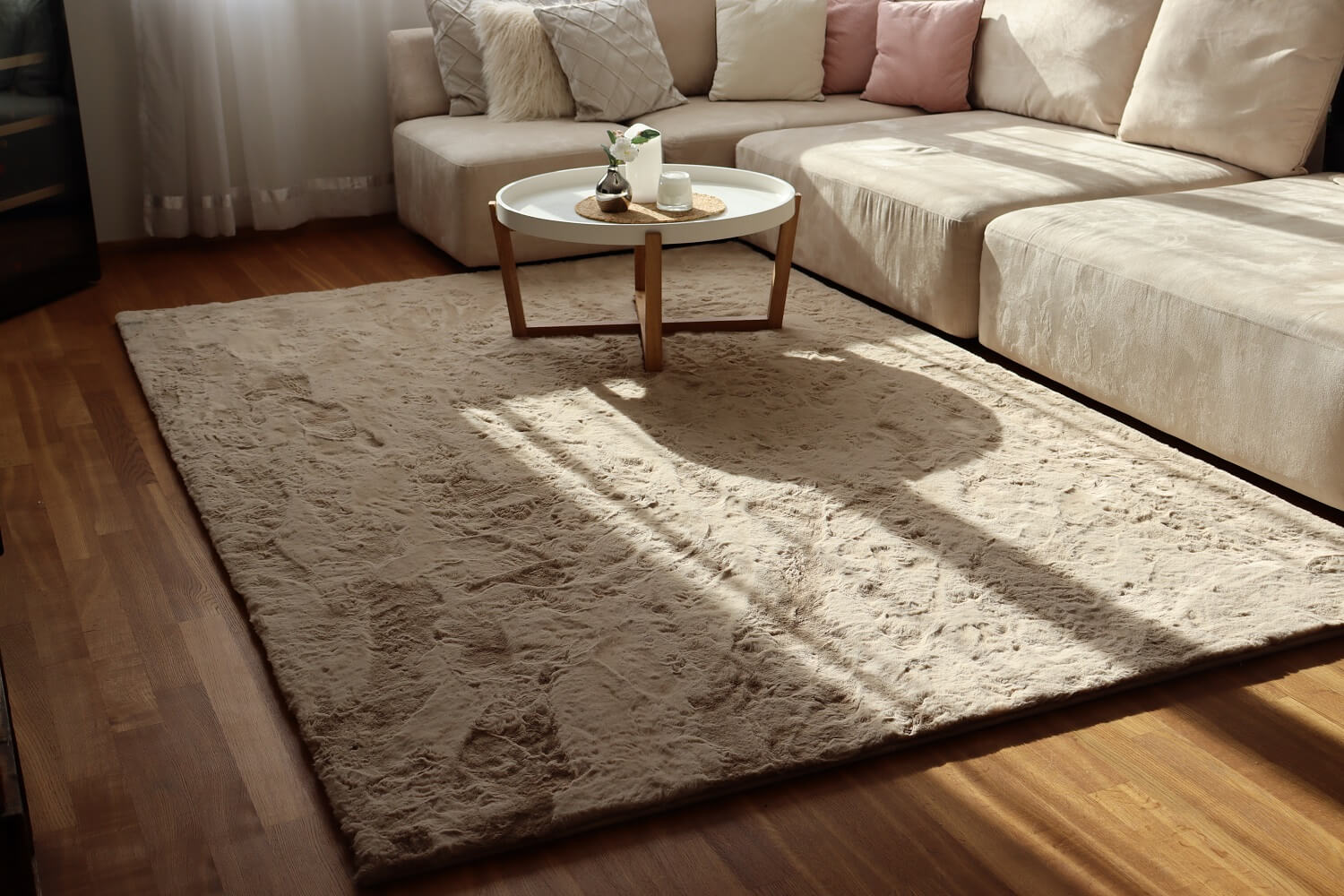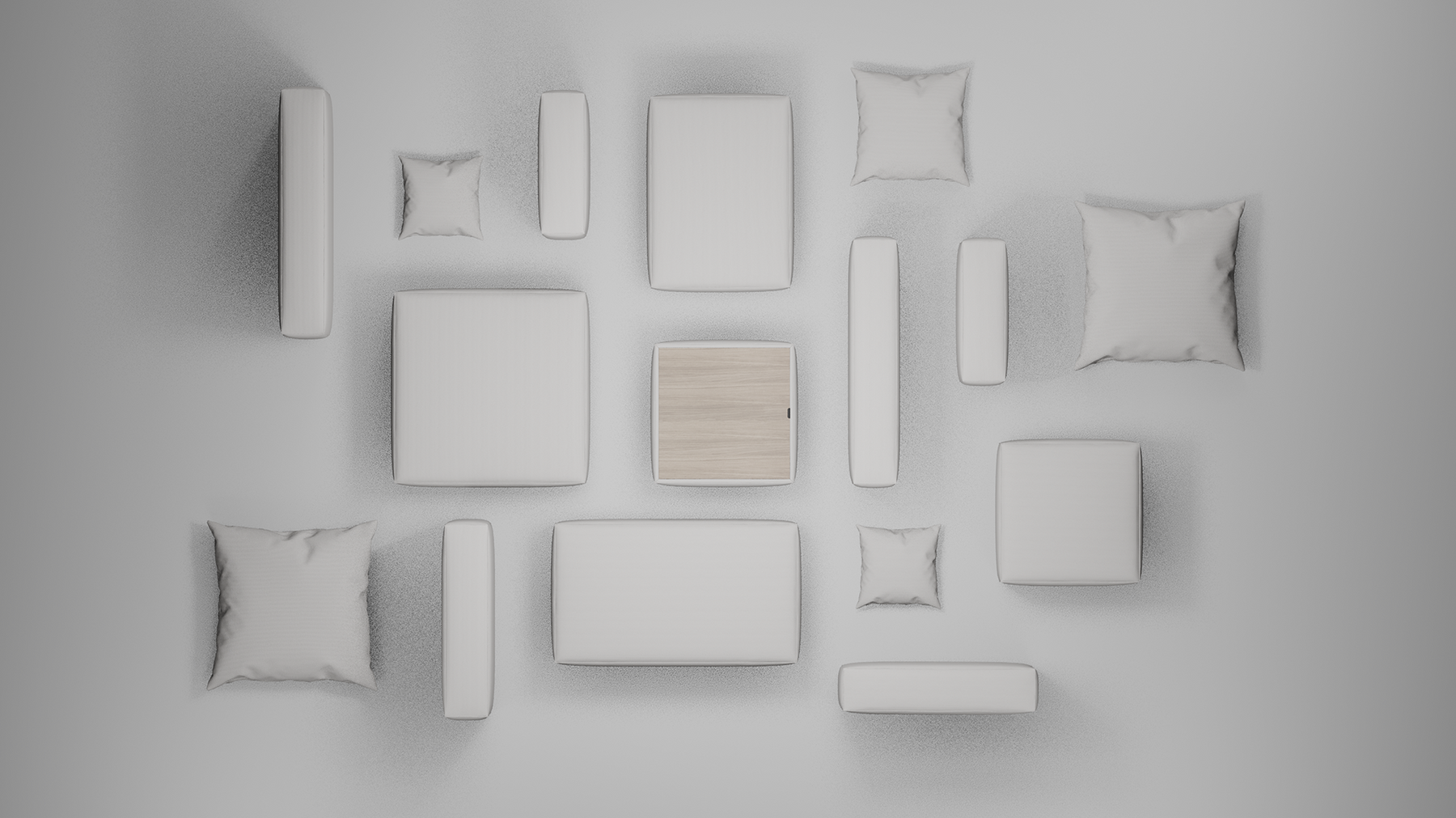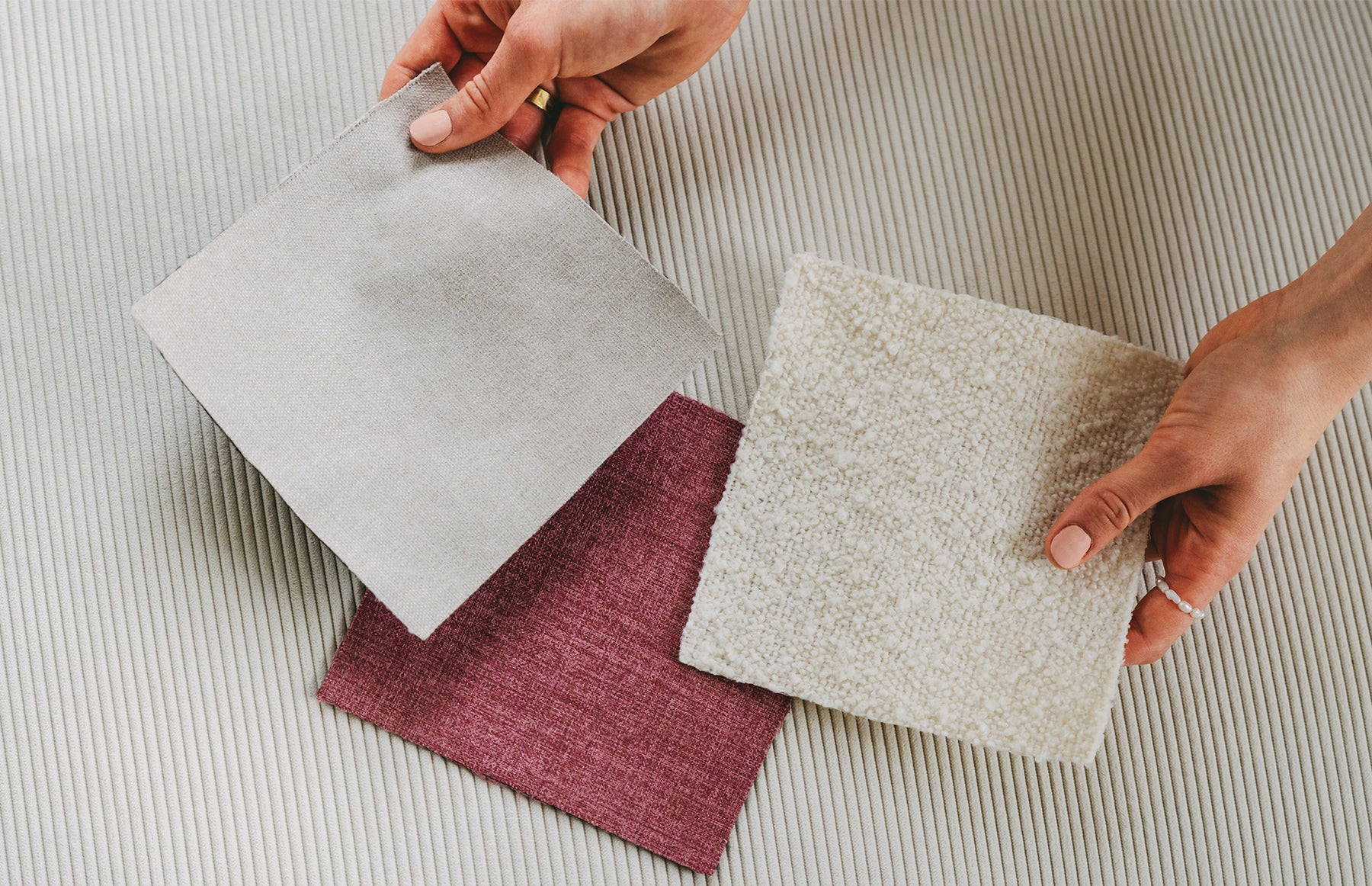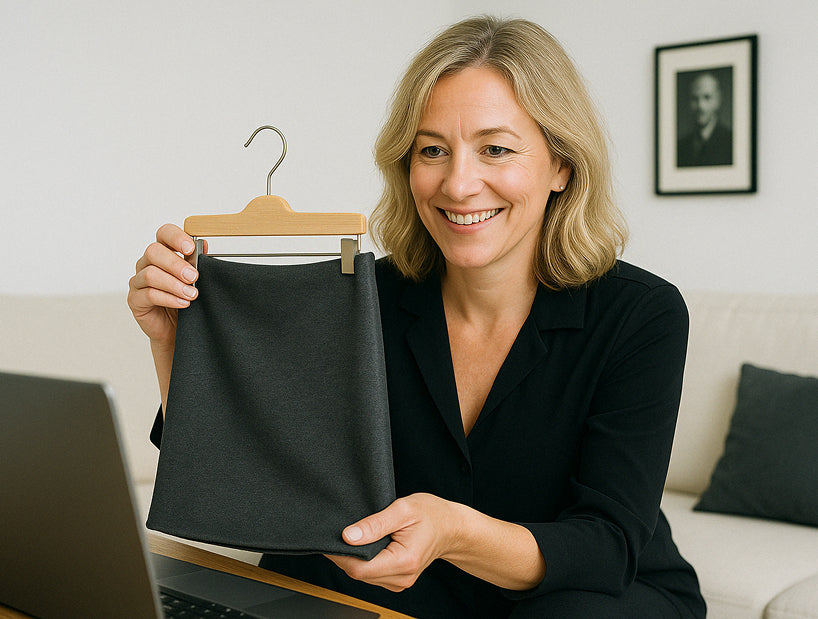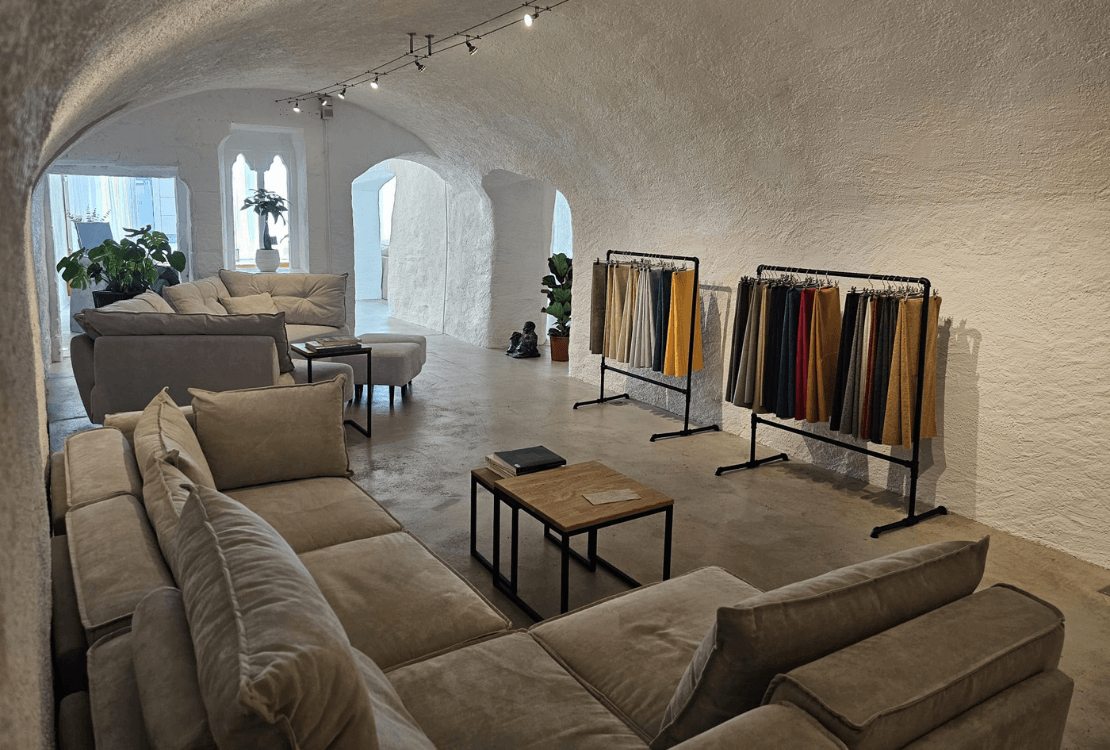Foam is a central component of many sofas and has a significant impact on comfort and sitting hardness. In this article we deal with the different types of foam, their properties and the correct selection criteria. You will find out how foam affects your experience on the sofa and what care is necessary to extend the lifespan of your furniture.
The different types of foam for sofas
Polyurethane foam: a common choice
Polyurethane foam is the most frequently used foam type for sofas. It offers a good balance between comfort and durability. Thanks to its versatile properties, it can be produced in various degrees of hardness, which enables manufacturers to achieve specific degrees of seat cherres.
An advantage of polyurethane foam is its adaptability to the body shape. This property ensures that you can sit comfortably without the foam being used too quickly. Nevertheless, it is important to note that the quality can vary greatly, depending on the manufacturer and the composition.
In addition, polyurethane foam is available in various densities, which means that it can be used for both inexpensive and high -quality sofas. The density of the foam not only affects the comfort, but also the lifespan of the sofa. High -tight foam usually offers better support and is more resistant to wear and tear, while low -strength foam is often cheaper, but can lose comfort faster.
Discover our modular sofas made of high -quality polyurethane foam
Latex foam: the natural option
Latex foam is obtained from the juice of the rubber tree and is considered the natural alternative to synthetic foams. It offers excellent breathing activity and high elasticity, which leads to optimal support.
Another advantage of latex foam is its environmental friendliness. Many consumers appreciate the sustainable properties of latex because it is biodegradable. Due to its strength, latex foam remains form -stable for years and does not lose support.
In addition, latex foam is hypoallergenic, which makes it an excellent choice for allergy sufferers. The natural structure of the foam prevents the growth of mold and bacteria, which contributes to a healthier living environment. Many manufacturers now also offer certified, pollutant-free latex foam products that meet the strict environmental and health standards.
Memory foam: comfort and adaptability
Memory foam has become very popular in recent years, especially because of its unique ability to adapt to the shape of the body. This property makes it ideal for people who need additional comfort and support, for example with back pain or other complaints.
The viscoelastic properties of memory foam ensure that the pressure is distributed evenly, which leads to a pleasant lying and sitting. One disadvantage, on the other hand, is that memory foam tends to be less breathable than other foams, which can be perceived as uncomfortable at high temperatures.
In order to counteract this disadvantage, many manufacturers now offer variants of memory foam that are equipped with special cooling technologies. These foams often contain gel elements or are provided with open cell structures that improve air circulation and thus create a more pleasant sleeping or seating climate. Memory foam can also be used in combination with other types of foam to combine the advantages of both materials and to ensure optimal support.
Understand the seat hardness of foam sofas
What does the seat hardness of a sofa determine?
The seat hardness of a sofa is determined by various factors, whereby the foam used plays a crucial role. In addition to the type of foam, the density and resistance of the material are also crucial.
- density: A higher density usually means a firmer seat and a longer lifespan.
- Hardness: Sofas are often offered in different degrees of hardness, from soft to firm.
- Additional materials: Spring seeds or other filling materials can also affect the seat hardness.
How to test the sitting hardness of a sofa
When buying a sofas It is important to check the seat hardness. Here are a few steps that you can follow to make the right choice:
- Sit on the sofa and check whether it seems pleasant to you. For example, you can do this in one Livom showroom.
- Test different sitting positions to see if the comfort remains constant.
- Check whether the foam jumps back when you get up.
Another important aspect that many buyers often overlooked is taking into account their own body weight and body size. These factors can have a significant impact on the perception of the seat hardness. For example, a heavy user can feel a sofa as a soft, while a light user may feel the same seat than too firm. Therefore it is advisable When testing the sofa to take into account your own physical properties.
In addition, the use of the sofa plays an important role in choosing the right seat hardness. If the sofa is mainly used for relaxed evenings, a softer seat could be more pleasant. For households with children or frequent guests, on the other hand, a firmer seat could be more sensible because it offers more stability and durability. It is worthwhile to include these considerations in the purchase decision to find a sofa that meets individual needs and lifestyles.

The advantages and disadvantages of different types of foam
Durability and durability of foam sofas
The durability of sofas varies greatly depending on the foam used. Polyurethane foam offers a good balance, while latex foam tends to be more durable. Memory foam can be susceptible to wear, especially with frequent use.
Comfort and support through different types of foam
Comfort is subjective and can vary greatly. While some people prefer the support of polyurethane foam, others appreciate the flexibility of latex foam. Memory foam offers unbeatable comfort, but can be too warm for some people.
- Polyurethane foam: Good for everyday seats, qualitative, stable and adaptable.
- Latex foam: Ideal for environmentally conscious buyers and for people with allergies.
- Memory foam: Excellent for people with special body requirements.
The correct foam choice for your sofa
Consideration of your individual needs
The selection of the right foam depends on your personal preferences and needs. Think about how important factors such as durability, comfort and environmental friendliness are.
If you spend a lot of time on your sofa, a high -quality foam is crucial, while an occasional sofa manages well with a less expensive option.
Important factors when choosing the foam
To make the best decision, you should consider the following points:
- Price: Consider your budget and long -term costs.
- Material preferences: Do you have preferences regarding natural or synthetic materials?
- Purpose of use: How is the sofa used? (e.g. children, pets, regular use)
Another important aspect is the density of the foam. Foams with a higher density usually offer better hold and durability, which is particularly important for sofas that are used intensively.
Care and maintenance of foam sofas
Cleaning and maintaining foam sofas
The correct care extends the Lifespan of your sofas significant. Make sure to follow the manufacturer's instructions to avoid damage. The following measures are recommended for most foam sofas:
- Regular Vacuumto remove dirt and dust.
- Avoid direct sunlight to protect the material from discoloration.
- At Spots sofort react with a damp cloth and mild cleaning agent.
Tips to extend the lifespan of your foam sofas
In order to extend the lifespan of your foam sofas, you can consider the following tips:
- Use a sofa train to protect the foam from wear and tear.
- Turn the pillows regularly to ensure even wear.
- Keep the sofa of radiators and other heat sources away so as not to damage the material.
In summary, it can be said that choosing the right foam for your sofa is crucial for comfort and durability. By understanding the different types of foams and their properties, you can make an informed decision that meets your needs. With the right care, your sofa remains a cozy retreat for many years.
